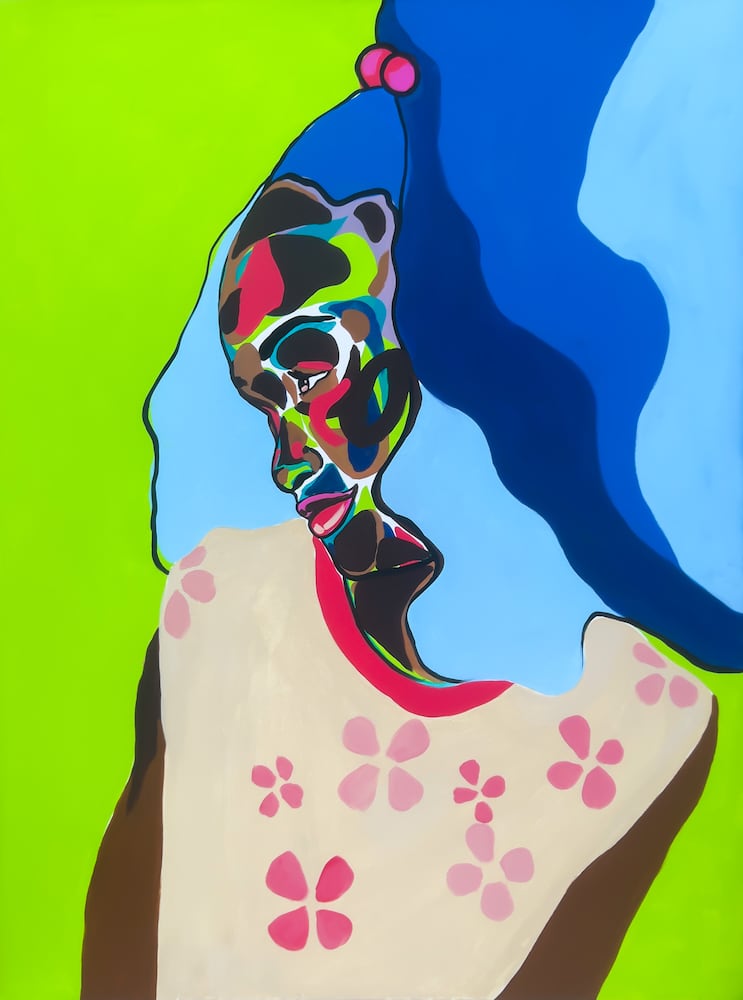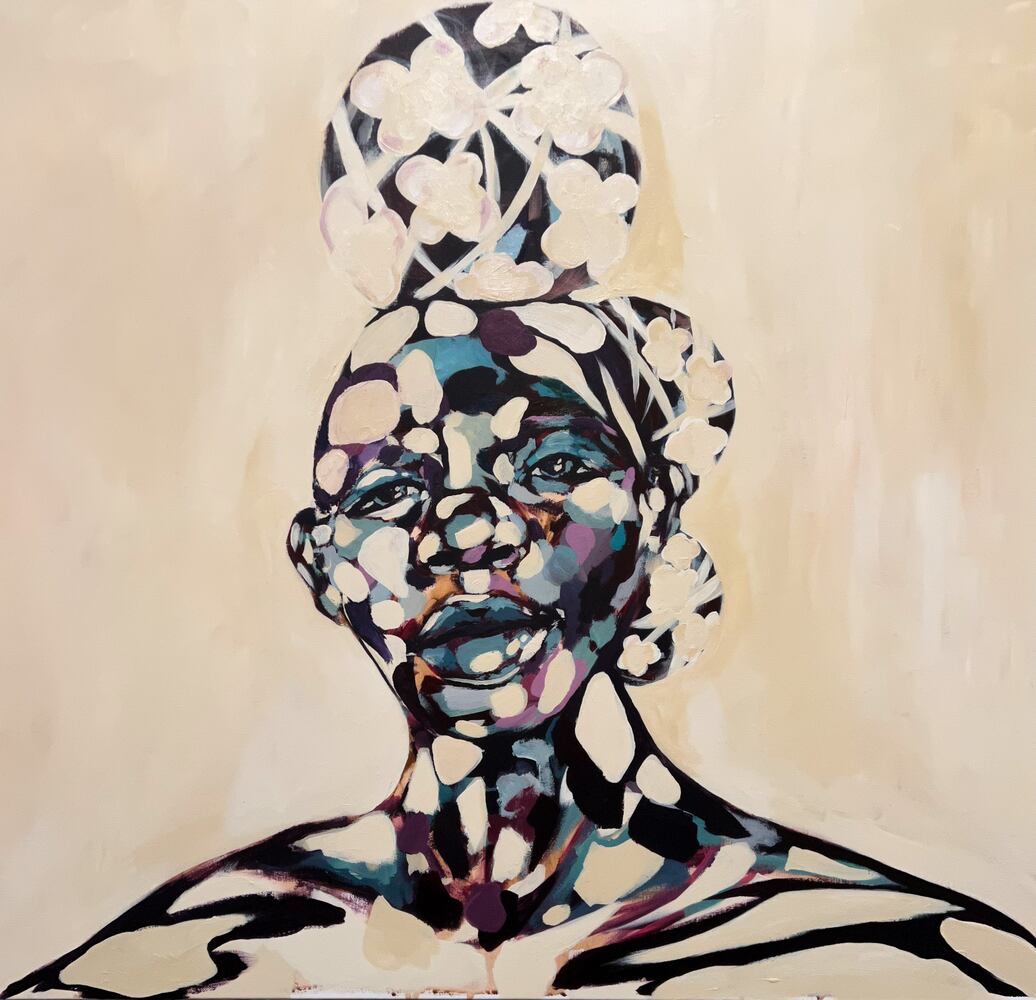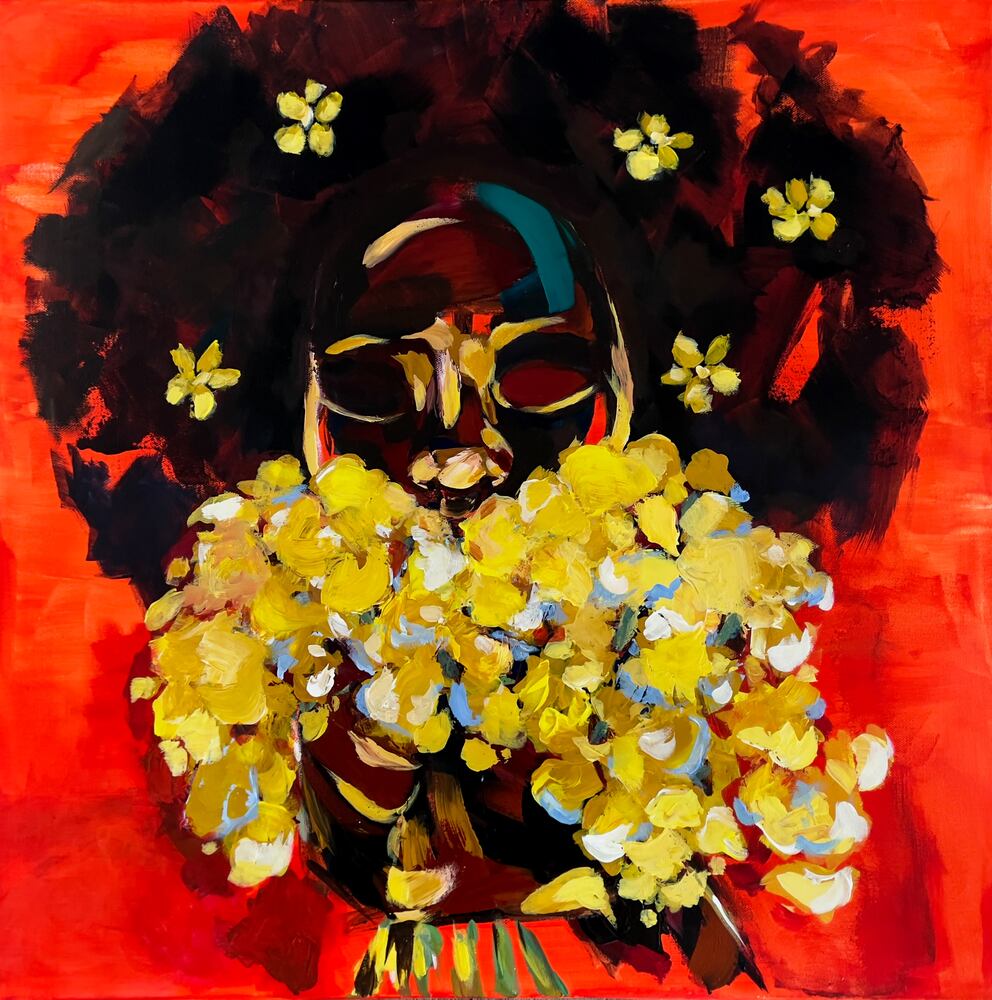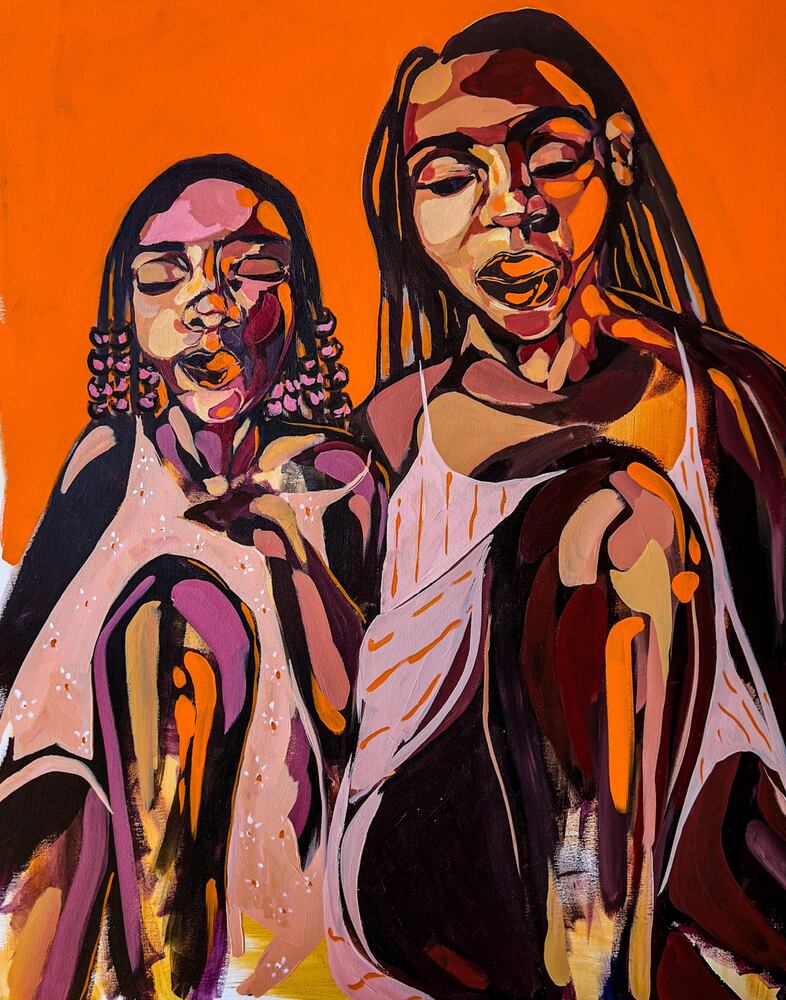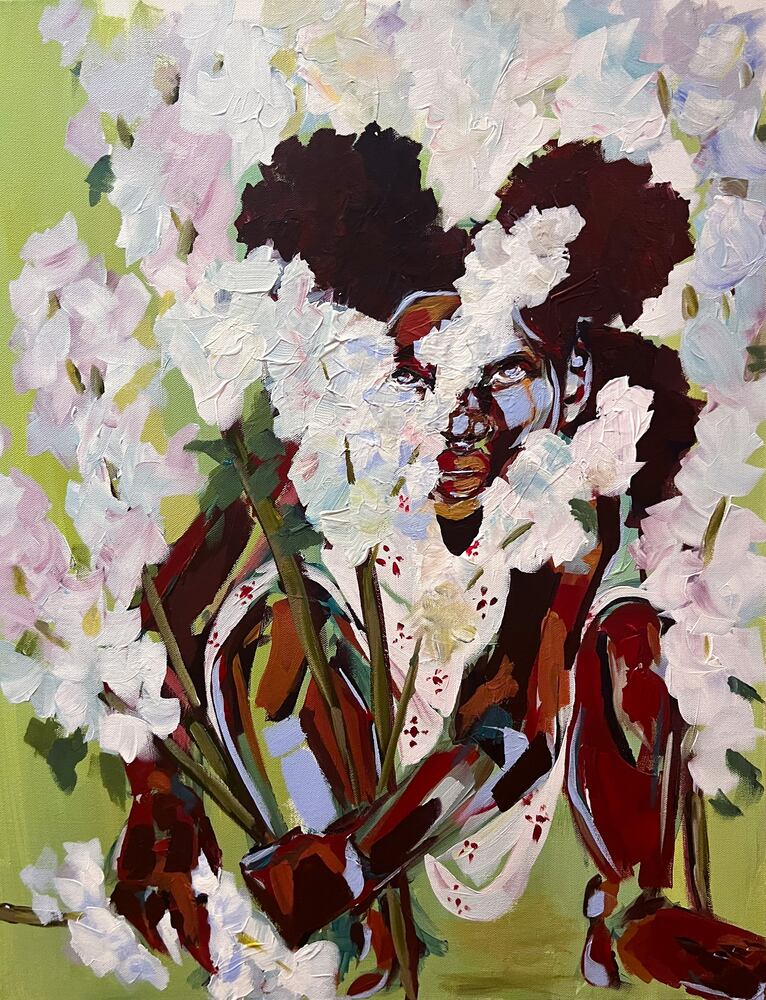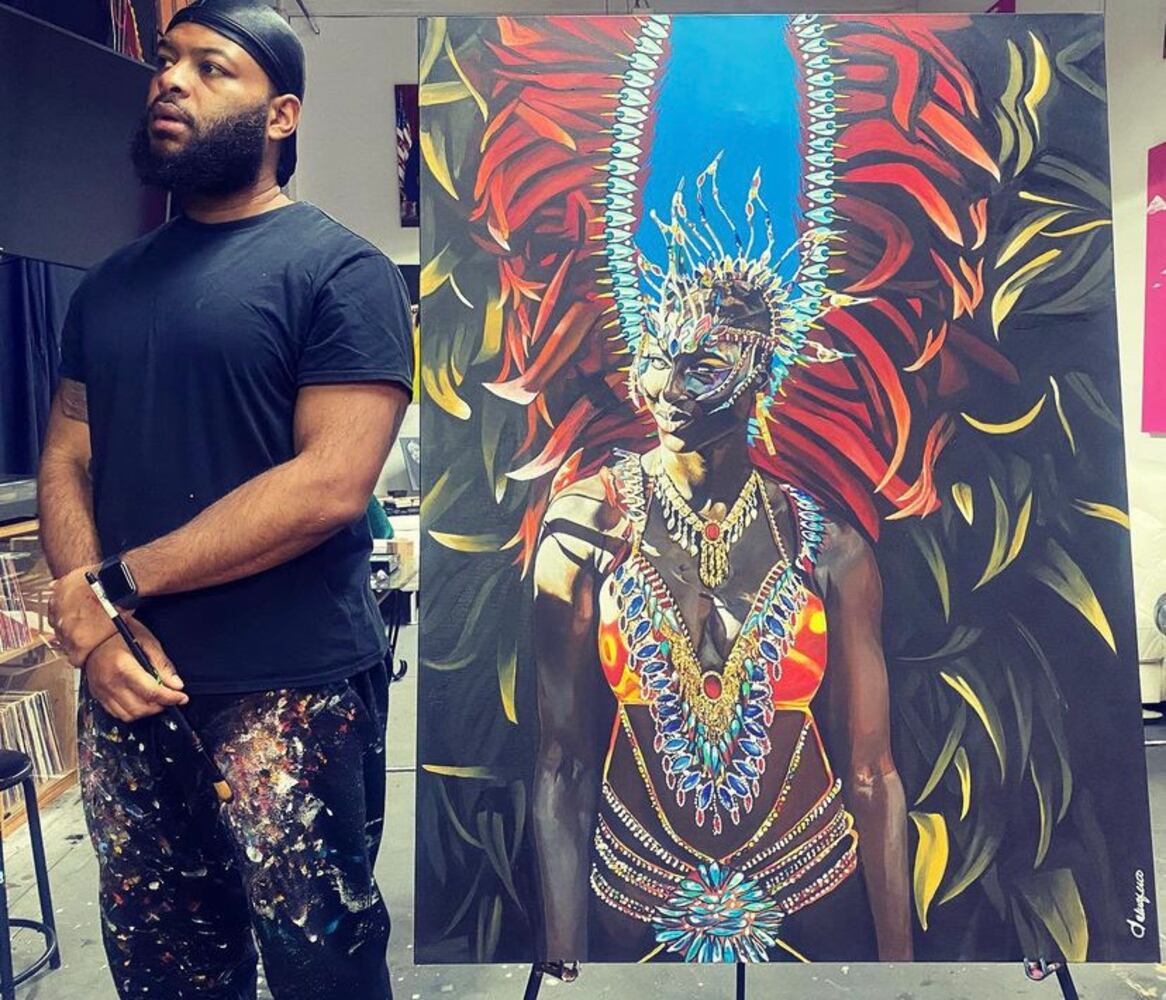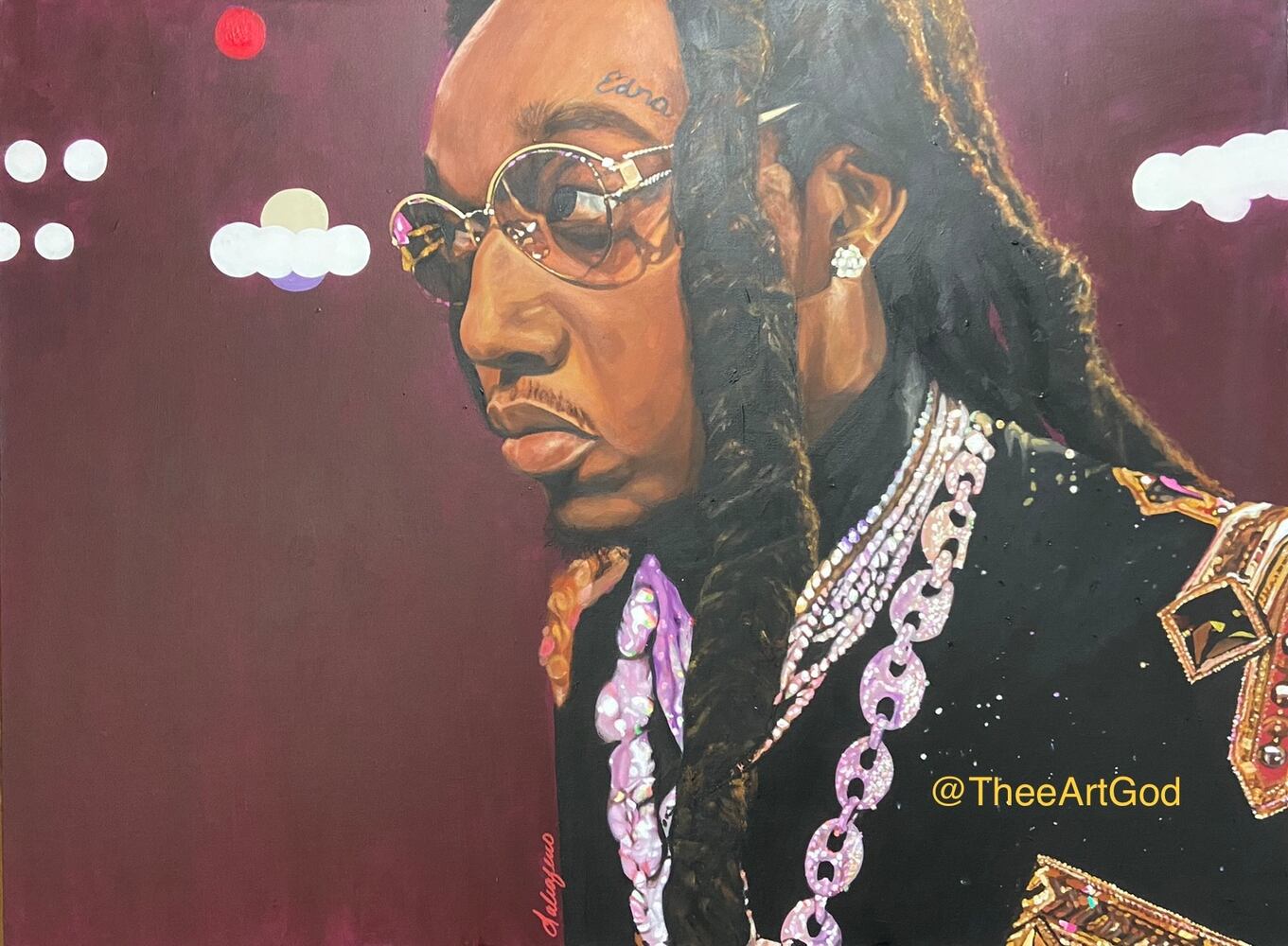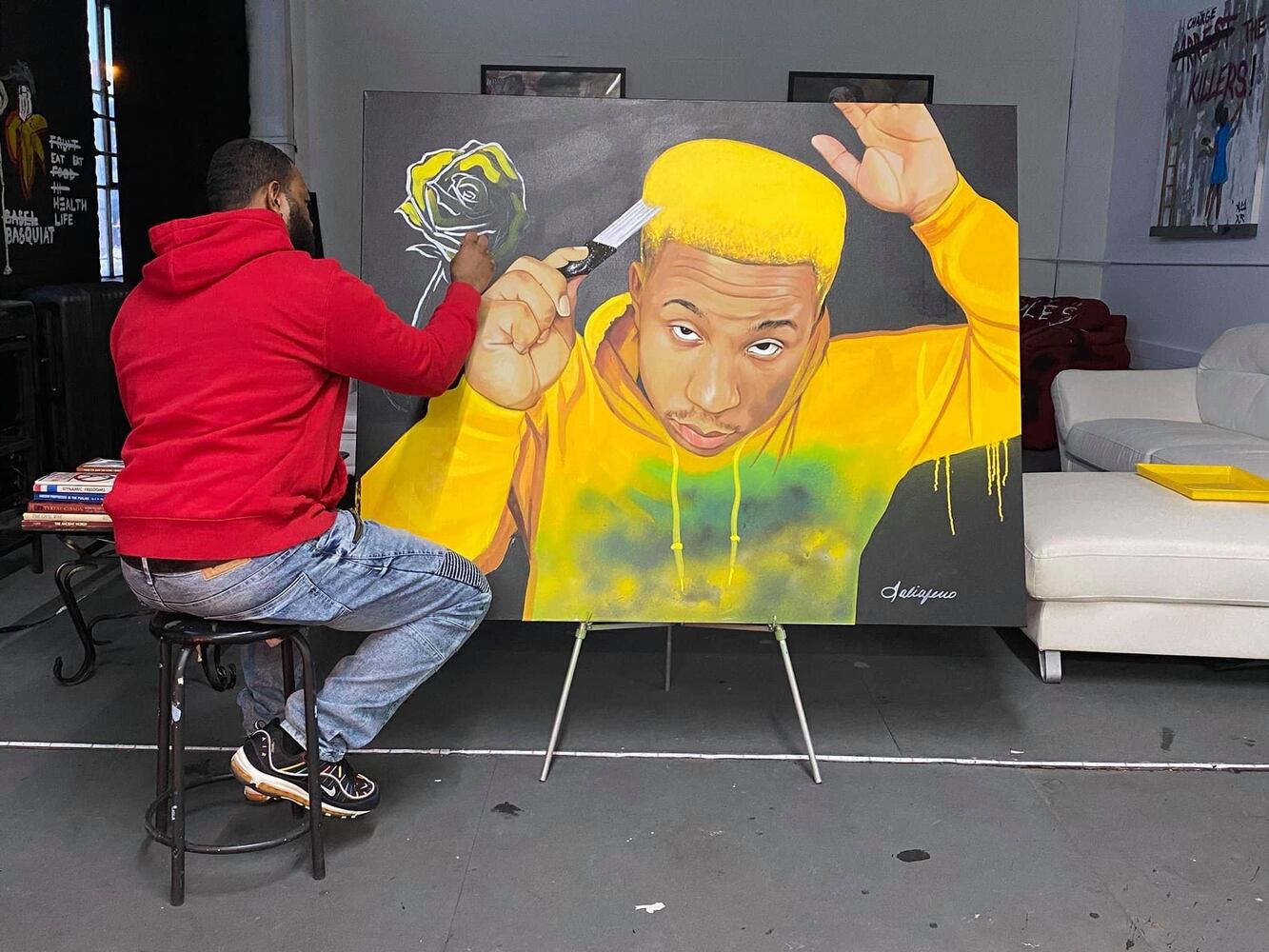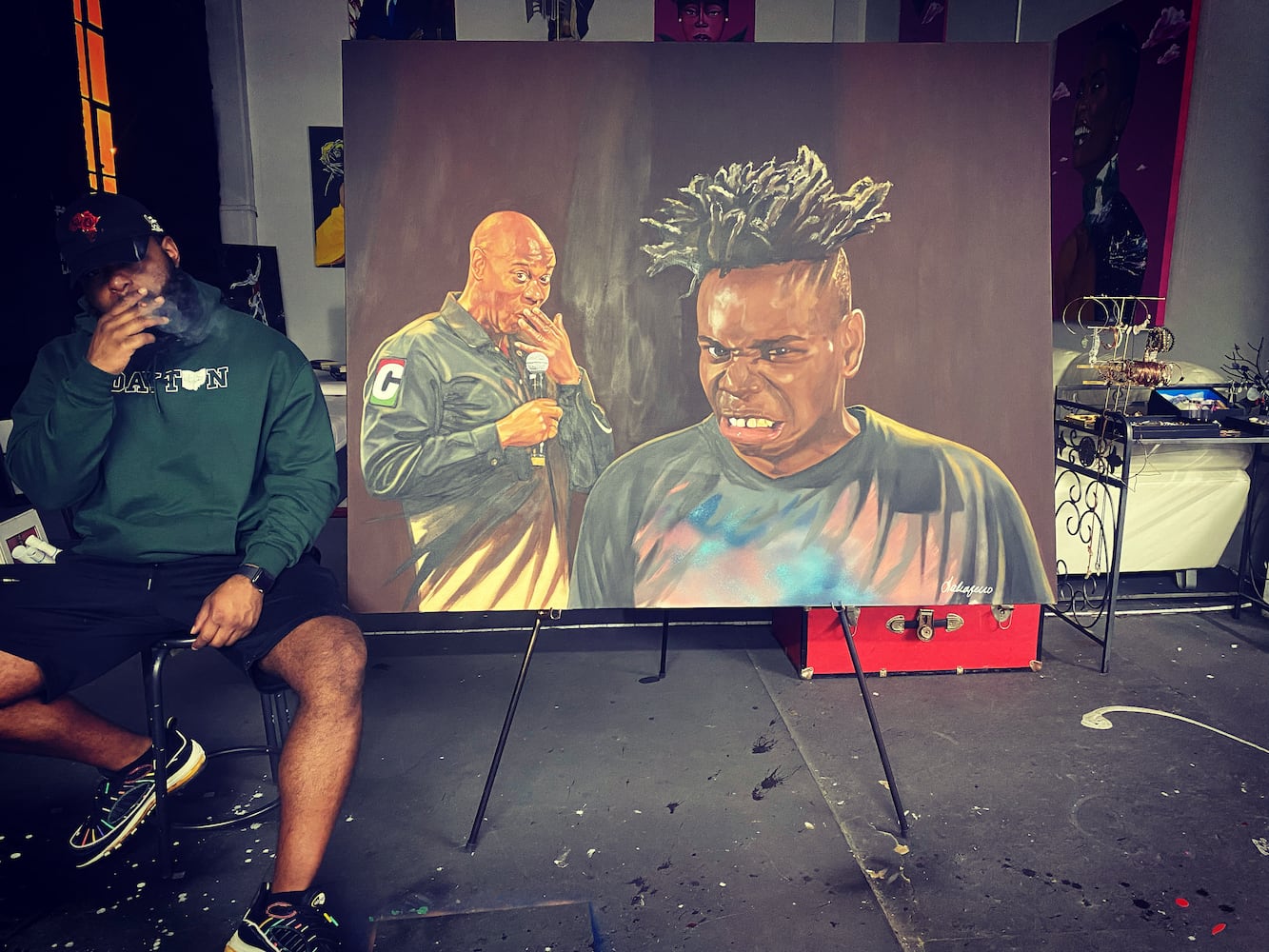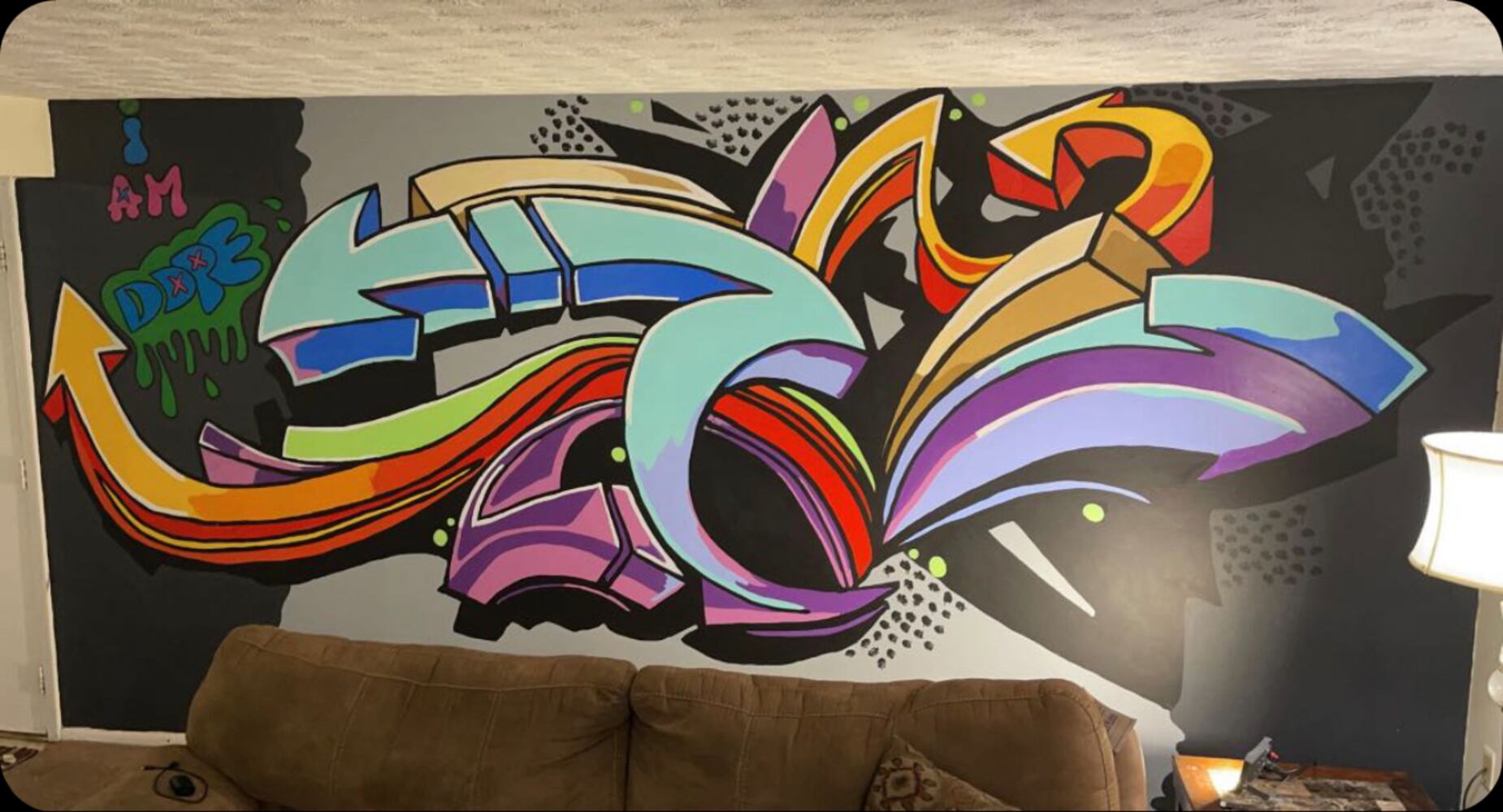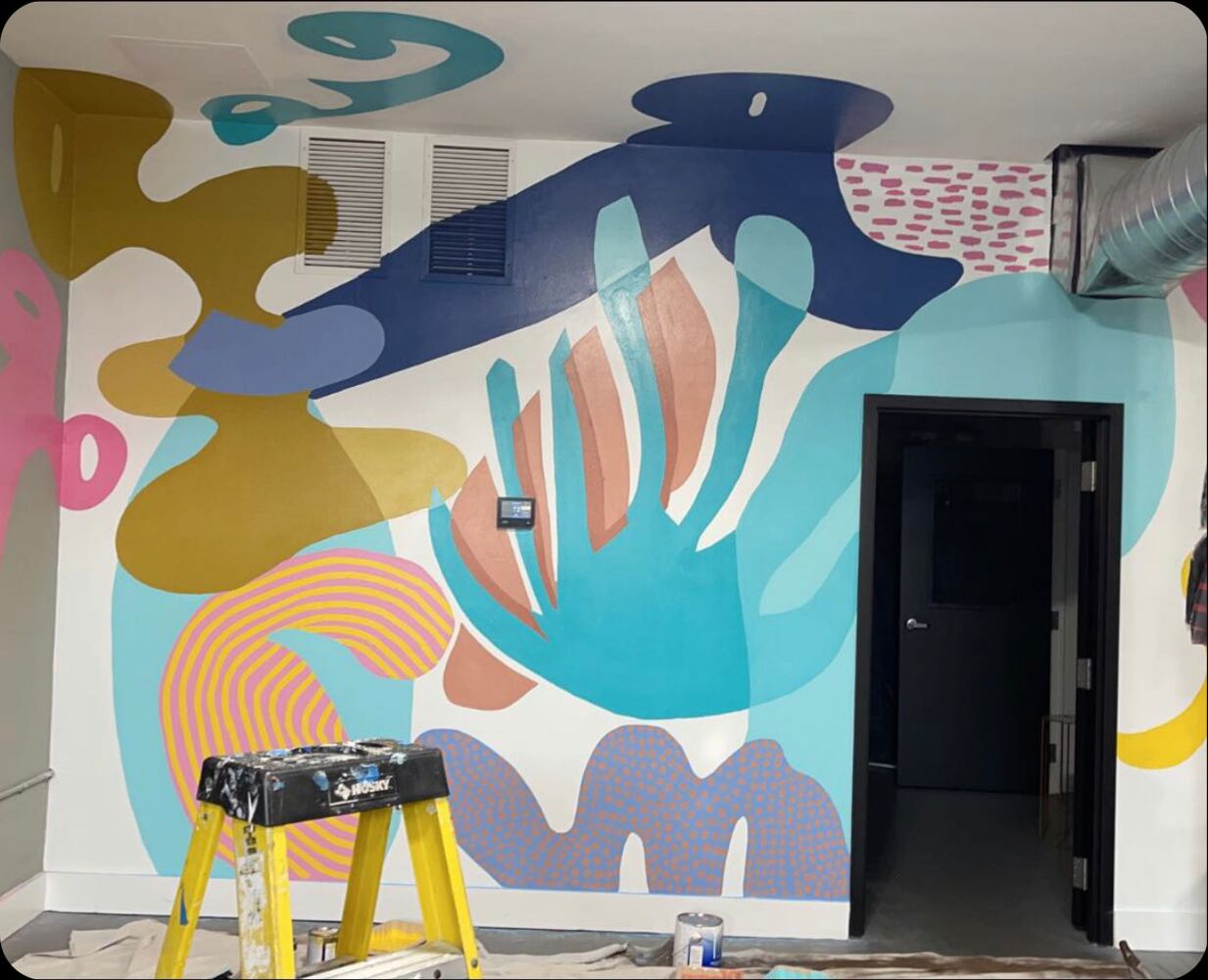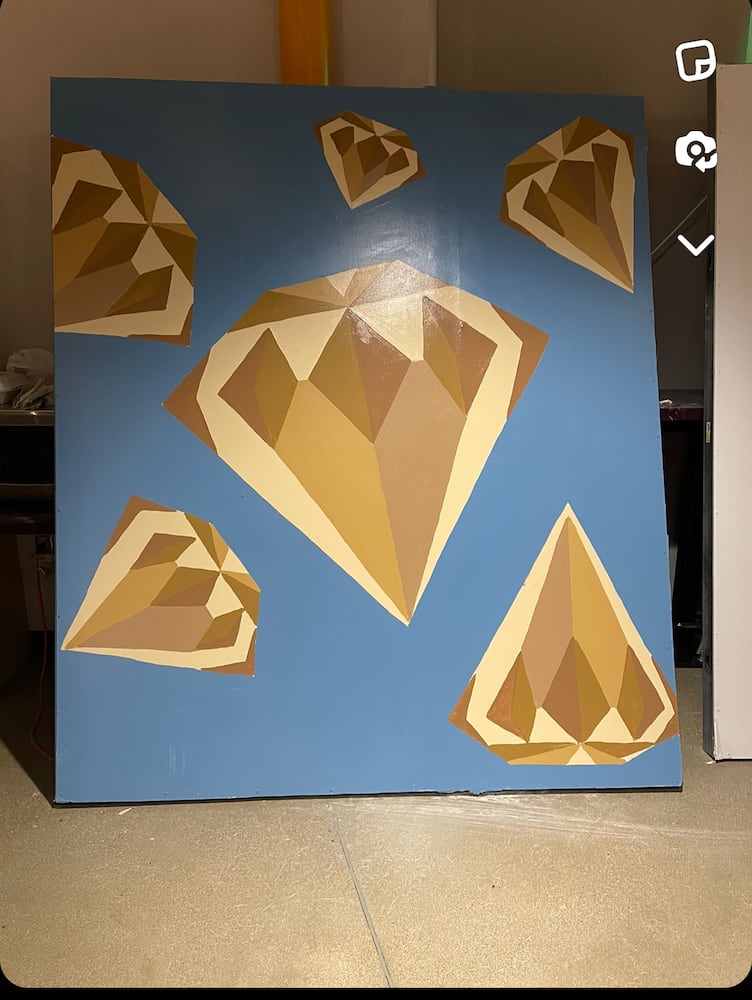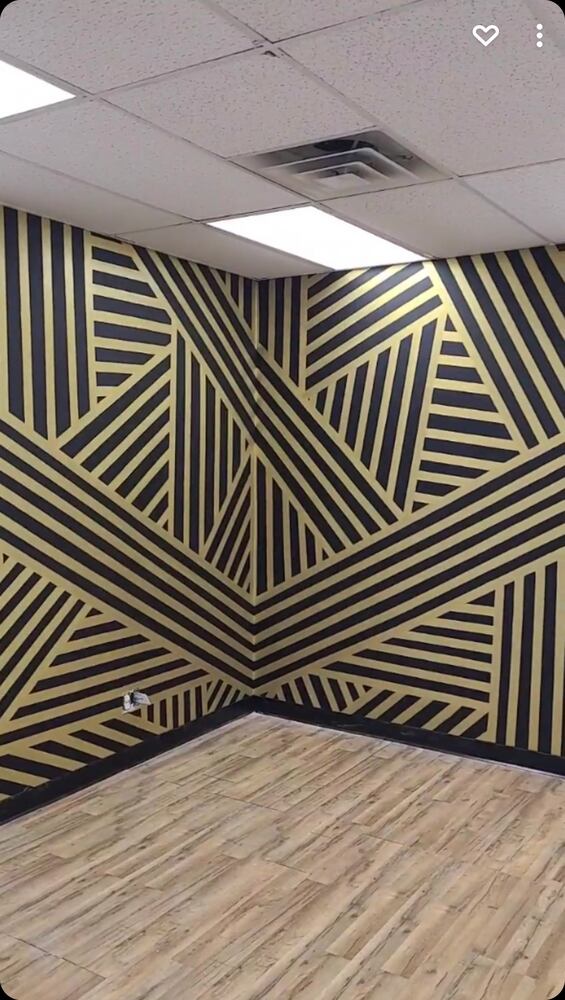Below are some of the many highlights from the discussion, but you are encouraged to watch the recording of the full conversation below and find other Black History Month coverage and contributors to February’s 28 Days of Black Excellence project.
WATCH THE FULL VIDEO
VIEW THE ARTWORK
MEET THE ARTISTS
Zuri Ali is a fine artist born and raised in Dayton who focuses on representing her journey through Black childhood, motherhood, and community. Her goal is to portray stories that are personal but also reflective of those around her, creating authentic conversations, relatability and comfort through vibrant acrylic paintings.
Facebook: Zuri Ali Art. Instagram: @ZuriAliArt. TikTok: @ArtsyMuva
Zuri Ali: I talked about this openly when I was in therapy after my last child because I felt like I was dealing with postpartum depression. My therapist knew I was an artist and we channeled that. I will never forget how she had me envision a place that was soothing, like a safe space, and I thought of a color that is in my mother’s bedroom that every time I walk in, it is like a rush of fresh air. It takes me to the best, most dreamlike space I’ve ever been. And so what I started doing was picturing a canvas painting of just that color and locking in on it. And that was the best thing that you could have ever taught me. It’s a very simple tool, but it worked wonders because my anxiety sometimes gets out of hand. I have little ones, I’m home all day with my two-year-old, and sometimes I need that rush of fresh air. That means I’m just closing my eyes for 10 seconds and being taken there by this imagery in my head. ... I started making my kids coloring pages out of my painting and it works so well when they’re high strung. And these are pictures that look like them because I paint a lot of paintings that look like us. I believe in representation, so they get to paint the afros and the puff balls, the face, and it’s just nice to see them get to enjoy something that is so recognizable for them. I didn’t have that as a kid. My mom used to have to paint my books and ornaments and things to look brown or to look like they had some texture in their hair. So for me to be able to create that for my kids, and it acts like a tool to help them release whatever tension, anxiety, frustration, is just incredible. And so I hope that these programs continue because I know art is the first thing cut from schools. It makes no sense because I understand the power that art has with kids.
WATCH: ZURI ALI ON BREAKING DOWN STIGMAS
Taliaferro Sebastian is an artist based out of Dayton and the owner of Art Has No Rules gallery, “Where we create images that capture culture on canvas.” He works in many mediums, but acrylic and spray paint are his most common. Taliaferro studied graphic art at Central State University, where he received his Bachelor’s degree. His influences include Abner Cope, Dwayne Daniels, James Pate, Ernie Barnes, Jean-Michel Basquiat and Kaws.
Website: ArtHasNoRules.com. Instagram: @OfficialArtHasNoRules. Facebook: Taliaferro Sebastian. TikTok: TheeArtGod
Taliaferro: I actually hate commissions. For some reason, my commissions get placed in a box. That’s why last year I only painted one picture the entire year. Granted, I was still doing art, still doing graphics and logos and I transitioned to doing art, clothes and stuff like that, but when people came to me with a commission, it was always somebody who had passed or “my auntie just passed last week,” “I need a picture or my cousin who just got shot, can you put him on the back of this jacket?” It got to the point to where I was painting all of this death. Every time I picked up my paintbrush or a pencil, I was painting somebody that’s deceased, and it started draining me to the point to where I said “this is not what I’m doing art for.” I need to draw or paint some life and you’re not giving me that. So I stopped doing commissions for people because I just wanted to be in the space where I’m creating colors and landscapes and things that bring life.
WATCH: TALIAFERRO ON ART IN SCHOOLS
Byron Smith is a Dayton native and graduate of Meadowdale high school. Smith has studied abstract art and specializes in murals. A mental health advocate, he creates many of the wall installations for the Gem City Selfie Museum. He believes colors have the ability to empower individuals and sees painting as a potent form of therapy. His favorite saying is from Pablo Picasso: “Every child is an artist; the problem is staying an artist when you grow up.”
Byron Smith: Art, when I get started, it’s hard for me to stop because I get so focused and it takes my mind off bills, people, kids, whatever. I learned everything from my first second, third, fourth, fifth and sixth grade teachers. They taught me pottery, wool and woven, they taught me charcoal and pencil drawings, they taught me oil. Kids need a stress reliever. It takes your mind away from a lot of the BS that you might go through as a kid. Because when they put their papers down, they still have to come home, they still might be going somewhere where they might be getting bullied. But when they pick the brush up they’re not in that mindset. They might not have the shoes, the Jordans, might not have the clothes, but when they pick up their paper and they start pouring the colors out, they aren’t thinking about any of it.
WATCH: BYRON SMITH ON KIDS AND ART
About the Author
